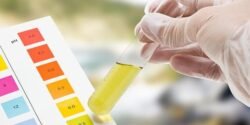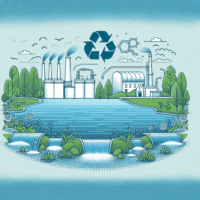Bergen Passaic Water Softening
The Bergen Passaic Water Softening Revolution: Transforming Quality and Sustainability in Water Treatment
Introduction
Water is essential to life, and yet the quality of the water we consume can significantly affect our health, home, and environment. In many regions across the United States, including areas in Bergen and Passaic Counties in New Jersey, water hardness is a prevalent issue. This has led to the need for effective water softening systems that can address mineral buildup and improve the quality of household water. This article explores the Bergen Passaic water softening initiatives, examining the issues surrounding water hardness, the methods of softening water, and the implications for public health, personal wellbeing, and environmental sustainability.
Understanding Water Hardness: The Basics
Water hardness is primarily caused by the presence of dissolved minerals, particularly calcium and magnesium. These minerals enter the water supply through natural processes such as the erosion of rocks and soil or through association with various human activities, including agriculture and industrial processes. The hardness of water is measured in grains per gallon (gpg) or parts per million (ppm).
Types of Water Hardness:
- Temporary Hardness: Caused by the presence of bicarbonate minerals, temporary hardness can be removed by boiling the water.
- Permanent Hardness: Resulting from sulfate or chloride minerals, permanent hardness cannot be removed by boiling and requires treatment.
The Impact of Hard Water
Hard water can have significant implications for both residential and commercial consumers. Here are some notable effects:
-
Health Concerns: Excessive mineral content can lead to health issues such as kidney stones and may impact nutrient absorption in the body.
-
Household Appliances: Hard minerals can cause scale buildup in appliances such as dishwashers and water heaters, leading to decreased efficiency and a shorter lifespan.
-
Cleaning Challenges: Hard water diminishes the effectiveness of soaps and detergents, which can result in a need for more cleaning products to achieve the desired cleanliness. This not only increases costs but can also have negative environmental repercussions.
- Skin and Hair: Hard water can lead to dry skin and hair, as the minerals strip away natural oils, resulting in irritation and discomfort.
Water Softening Solutions: A Historical Perspective
Traditionally, water softening utilized chemical processes that often involved the use of sodium ions to replace calcium and magnesium in the water. Salt-based water softeners are still widely adopted today, particularly in residential settings. However, with growing environmental concerns, the water treatment space is witnessing innovations and a shift towards more sustainable solutions.
Conventional Water Softeners:
- These systems ion-exchange calcium and magnesium with sodium.
- They require regular salt replenishment, leading to continually rising costs and an increase in sodium levels in the water supply.
Exploring the Bergen Passaic Water Softening Initiatives
Local Context
Bergen and Passaic Counties are two densely populated regions in New Jersey, where public health, environmental sustainability, and a quality lifestyle are top priorities for residents. Recognizing the challenges associated with hard water, local authorities, and businesses have embarked upon projects aimed at improving water quality through effective softening solutions.
Public and Private Partnership
The Bergen Passaic water softening initiatives are a prime example of how collaboration between local governments and private entities can lead to meaningful improvements. Various projects include the installation of advanced water treatment facilities, community awareness programs, and incentives to promote water softening technologies.
-
Investment in Modern Technology: Many municipalities in these counties have invested in the latest water softening technologies, including reverse osmosis systems, nanotechnology, and advanced filtration methods. These systems are capable of providing softened water without increasing sodium levels, thus catering to both health and environmental concerns.
- Community Awareness Programs: The local governments have launched campaigns to educate residents about the benefits of water softening, including workshops, community fairs, and informational pamphlets. These initiatives emphasize not only the advantages of softened water but also the importance of water conservation in general.
Case Studies
Several successful case studies showcase the effectiveness of water softening initiatives in Bergen and Passaic Counties:
-
The City of Paterson: Paterson has implemented a state-of-the-art water treatment facility capable of handling varying water hardness levels affecting the population. This facility employs multiple treatment processes, including ion exchange and reverse osmosis, to meet community needs.
-
Bergen County Water Utility Authority: This authority has adopted a multi-pronged approach to ensure efficient water treatment and softening. This includes regular water quality testing, obtaining feedback from residents on perceived water quality, and investing in infrastructure improvements.
- Ridgewood Village: This suburb has made significant strides in water treatment by implementing a comprehensive water quality plan that focuses on reducing hardness and improving overall water hygiene. Ridgewood collaborates with local organizations to promote best practices, reducing unnecessary salt usage, and encouraging sustainable approaches to water treatment.
The Future of Water Treatment and Softening
As cities and municipalities continue further down the path of sustainability, it is essential to consider the following:
Innovations in Water Treatment Technologies
-
Ion Exchange Alternatives: New materials, such as synthetic resin can provide an effective ion-exchange solution that reduces sodium output.
-
Magnetic and Electric Water Treatment: These emerging technologies alter particle behavior and may reduce scale formation without traditional softening methods.
- Electrodialysis: This innovative method uses electricity to selectively move ions through membranes, efficiently softening water without the need for extensive chemicals or salt.
Regulatory Framework
The environmental impact of water softening technologies prompts the need for regulatory standards that prioritize not just human health but ecological health as well. Local councils, in collaboration with environmental groups, can establish a clean water infrastructure plan that sets reviews and updates water quality regulations and suggests standards for residential systems.
Community Commitment to Sustainable Practices
Ultimately, community involvement will play a crucial role in the success of the Bergen Passaic water softening initiatives. Regular feedback from residents, along with educational programs on sustainable water practices and incentives for eco-friendly systems, will help foster a community committed to improving water quality.
Conclusion
Water softening is more than just a method of treatment; it’s a path to better health, environmental protection, and enhanced quality of life for the residents of Bergen and Passaic Counties. As technological advancements continue to evolve, and community efforts grow stronger, the Bergen Passaic water softening initiatives serve as a model for other regions facing similar challenges.
By building on the successes achieved thus far and embracing sustainable innovations, local authorities, residents, and businesses can ensure that all have access to clean, soft, and health-promoting water. The future of water softening in these communities looks bright, and as they continue to innovate and collaborate, they can create a legacy of quality water treatment that highlights the importance of sustainability for generations to come.
This comprehensive examination of water softening in the Bergen and Passaic area sets the stage for broader discussions among community leaders, policymakers, and residents regarding water quality and sustainability, emphasizing the crucial role of collaboration and education in this ongoing endeavor.


